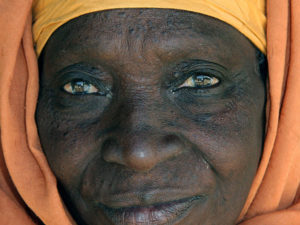
Working together to solve problems
Types of problems global health project face and how to solve them.
Global health projects face many challenges. In this blog, I continue talking about some of them and I will focus on why and how some projects get in trouble, about my “no blame-no shame” policy and how to solve most common “troubles.”
When a project gets into trouble or faces a challenge, most people want to know why it happened. However, it is more effective if you keep people from falling into the “why” trap that can take a lot of time and attention from actually implementing the solution. It is best to identify who is affected by the troubles or problems and the impact the problems have on the overall goal and objectives of the project than to find all the reasons or responsible parties for the trouble. That is what a call my “no blame-no shame” policy. This policy is essential to prevent project staff from getting defensive or protective of their jobs instead of taking decisive action to solve the problems they are in. What you want is for everyone to work together to solve the problems. So focus on mitigating the impact the troubles have had on those affected by it and finding ways to solve the problems your project faces by taking corrective action and implementing required changes as soon as you can. You must also know the reasons, of course, in order to prevent this kind of problem from happening again, but you should not use the causes of the problems to assign blame. Instead use them to teach your team and help them improve how they work. You cannot prevent all problems but you can learn from this one situation you all got into and prevent it from happening again. This will make you better and stronger to address the next challenge!
What kind of problems can a project get into? Many! For the purpose of this short blog, I will address the three main type of troubles projects have to solve: design flaws, ineffective implementation strategies, and staff performance troubles.
Some problems arise because of design flaws. For example, a project may have been designed to increase immunization coverage by reaching children in the most isolated areas of a country. While this is a worthwhile strategy, it should not have been the main one. The project may have been designed based on incomplete or even incorrect information. This can happen because we never have a complete picture or all the data we would need to make informed decisions in global health. This design flaw can cause a problem because the strategy of focusing resources to reach isolated communities would not take into consideration that the latest census identified that most not immunized children are in easy to reach slums surrounding urban areas. If not corrected, this design flaw may cause problems and the project may fail to increase immunization rates. As soon as this and other design flaws are identified, the project team would need to correct its strategy and make adjustments. So, check the design assumptions and the theory of change on which your project is based to make sure it is based on accurate information and they are still correct.
Some troubles arise because despite having a sound design, the implementation is not monitored properly and adjusted as necessary. For example, a project may have been designed to strengthen how decentralized district health teams work and manage their programs. The project is doing what they planned and the donor wanted, but may get into trouble if they are not able to demonstrate that what they are doing really improved how the district teams work and the results they get as a result of the assistance received. It helps to monitor not only what you do but also the outcomes of what you do. It is not enough to do all the activities in your work plan if you cannot demonstrate they achieved the intended results and whether what the project does actually works. So monitor results and stay flexible and change strategy if the feedback and outcomes you get are not what you, the donor or the host country expected.
It is key to have a “project performance scorecard” with clear lines of responsibility and accountability that help you detect staff performance troubles before they get big and promptly take corrective action. Model the “no blame-no shame” policy in all you do when you deal with staff performance troubles, or challenges in a project. You will be able to minimize problems and will mostly deal with staff’s performance problems if everyone part of the team is open and transparent and not afraid of making a mistake. Mistakes do happen but can be fixed if detected promptly. You should solve staff performance problems in private with the person in question as soon as possible. Again, keep using the “no blame-no shame” policy and focus on the facts that show the performance problem and work together to plan, implement and monitor the result of a corrective action plan.
Next time, I will write more about how to detect when your project is in trouble and how to lead the project through changes to correct them. We have helped many clients through many troubles and can help you if you suspect your project is in trouble. Please contact me at info@realizingglobalhealth.com to set up an appointment to help you solve your troubles. Do not delay.


